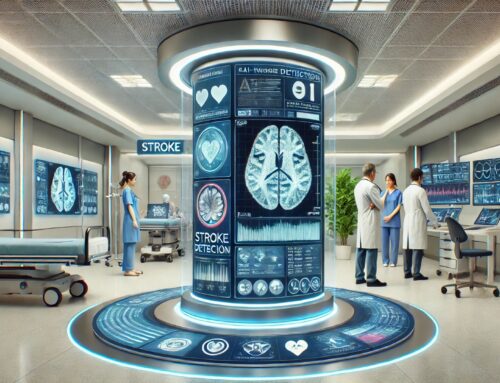Tele-intensivist care accelerates treatment, suggests study of more than 150,000 patients |
- ICU services provided via telemedicine improve care compared to traditional ICU models, decreasing the risk of death and helping patients get out of the ICU and hospital quicker, suggests research being presented at SCCM’s 50th Critical Care Congress.
- ICU-telemedicine enables intensivists to do everything they can do in person, except touch the patient, via real-time two-way audio-video communication and access to the patient’s monitors, medical record and test results.
- Patients who received ICU-telemedicine were 18% less likely to die and got out of the hospital two days sooner than patients who had traditional ICU care, in which an intensivist is not on-site to provide around-the-clock care.
- The pandemic has underscored the value of ICU-telemedicine, which is estimated to be available at about15% to 20%of U.S. hospitals.
Intensive care unit (ICU) patients who receive services via telemedicine are less likely to die and more likely to get out of the hospital sooner compared to those receiving traditional ICU care, suggests a large study being presented at the Society of Critical Care Medicine’s 50th Critical Care Congress.
The COVID-19 pandemic has underscored the value of ICU-telemedicine, which ensures patients receive intensivist-led care around-the-clock when an on-site specialist is not available. Telemedicine enables intensivists to do everything they can in person except touch the patient, including viewing bedside monitors, reviewing test results and medical records, and communicating with the patient and bedside nurse (via two-way video).
“In an ideal world, patients would have an intensivist at the bedside 24/7, but the reality is that even if we had all of the money in the world, we don’t have enough trained professionals to do the job,” said Chiedozie I. Udeh M.D., MHEcon, M.B.A., lead author of the study and an intensivist at Cleveland Clinic Foundation. “Telemedicine offers an excellent means for providing that level of care, allowing health issues to be discovered earlier and care moved along more quickly so that recovery can be as smooth and swift as possible.”
ICU-telemedicine provides an intermediate step between the two models of ICU care: 24/7 care where an intensivist is always on-site (more common at large medical centers) and the traditional model, where an intensivist is not on-site around-the-clock. (In some hospitals, intensivists assess patients in person during the day but are not on-site at night while other hospitals have no intensivists on staff.) In the more common traditional model, when there is no intensivist on-site, nurses monitor patients and contact the doctor on call if urgent issues arise. ICU-telemedicine ensures patients are regularly assessed even when there isn’t an intensivist on-site. The ICU-intensivist can immediately alter the course of care as needed – such as by changing a patient’s medication or the amount of fluids given. This proactive approach means the patient can be started on appropriate care sooner.
The study included 153,987 patients who received ICU care at one of nine Cleveland Clinic hospitals between Jan. 1, 2010 and Dec. 31, 2019. Overall, 108,482 (70%) received ICU-telemedicine care during hours when an intensivist wasn’t on-site. Those who received telemedicine care were about 18% less likely to die, and spent 1.6 fewer days in the ICU and 2.1 fewer days in the hospital. Cleveland Clinic began gradually deploying ICU-telemedicine in 2014.
Various factors can increase an ICU patient’s risk of dying, including the reason for admission (such as cardiac arrest or sepsis), race (non-white patients are more likely to die) and being admitted on a weekend. In the study, researchers found telemedicine mitigated the last factor, meaning telemedicine patients who were admitted on a weekend were no more likely to die than those who were admitted on a weekday.
“The demand for critical care has been growing as the population ages and COVID-19 has exacerbated that need,” said Dr. Udeh. “Although this study ended before the COVID-19 pandemic, the value of ICU-telemedicine has become even more clear during the pandemic, including providing the ability to extend care when the ICU reaches capacity and staff levels are stretched.”
Dr. Udeh estimates 15% to 20% of U.S. hospitals offer ICU-telemedicine, which can be provided from a command center elsewhere in the hospital system, even many states away. In some cases, ICU-telemedicine is provided by an independent company, or by a different hospital system.
Working in the telemedicine command center, tele-intensivists monitor a dashboard of patients at various hospitals, regularly checking on each. Using real-time audio-visual two-way communication, the intensivist, the bedside nurse and the patient can see and talk to each other, and the intensivist can observe the various monitors tracking the patient’s vitals (such as oxygen levels and heart rate), and call up the patient’s medical records, X-rays and other test results. The software typically includes decision support tools that help identify patients who may be sicker or are deteriorating, enhancing the tele-intensivist’s ability to proactively intervene when appropriate.
ICU-telemedicine can help preserve the workforce, says Dr. Udeh. One tele-intensivist working overnight can cover several ICUs, allowing the daytime intensivist to get more uninterrupted sleep, decreasing the likelihood of provider burnout.
THE SOCIETY OF CRITICAL CARE MEDICINE
The Society of Critical Care Medicine (SCCM) is the largest nonprofit medical organization dedicated to promoting excellence and consistency in the practice of critical care. With members in more than 100 countries, SCCM is the only organization that represents all professional components of the critical care team. The SCCM Critical Care Congress brings together intensivists and critical care experts from around the world to share the latest scientific research, develop solutions to common issues and improve the care of critically ill and injured patients. Visit sccm.org for more information. Follow @SCCM on Twitter or visit us on Facebook.












